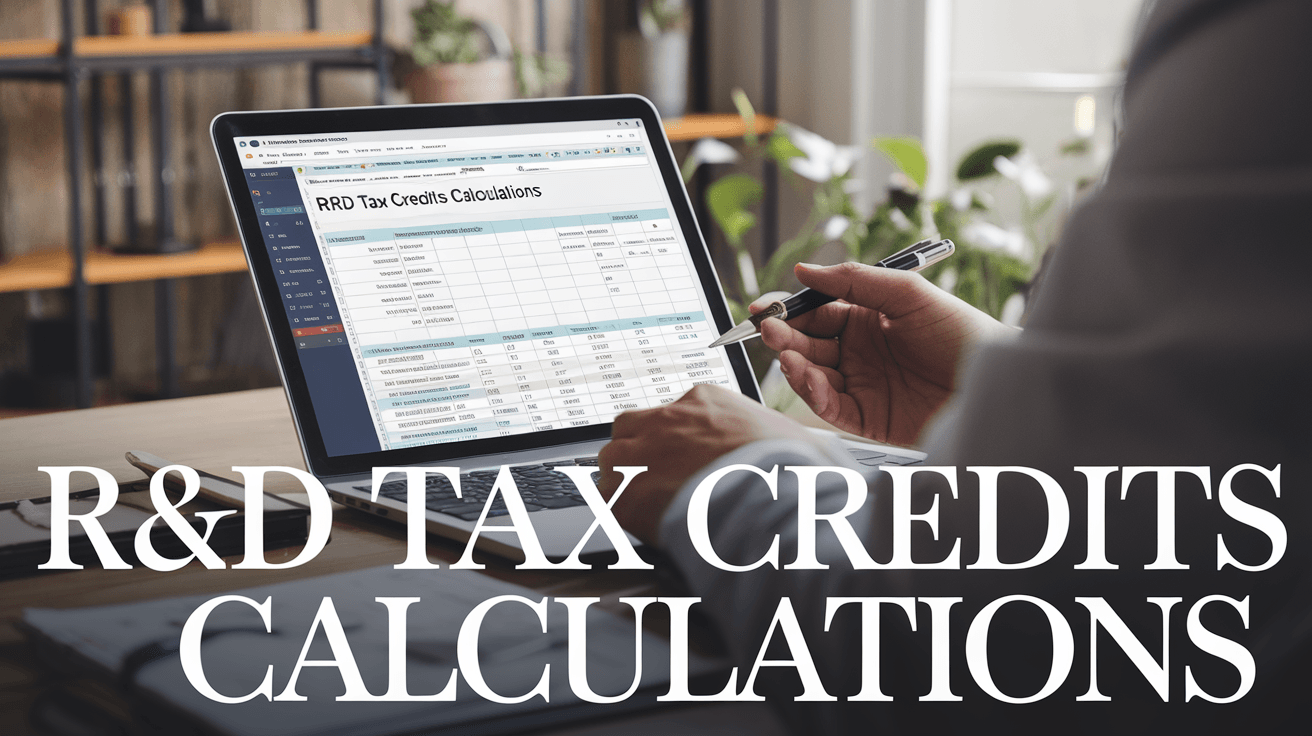R&D Tax Credits Eastleigh Hampshire
R&D tax credits in Eastleigh, Hampshire, offer financial incentives for companies investing in research and development. These credits can reduce your corporation tax liability or provide a cash payment if your business is loss-making, significantly supporting your innovation efforts.
To qualify, your business must engage in projects advancing scientific or technological knowledge, involving the development of new products, services, or processes, and resolving technical uncertainties. Eligible costs include staff wages, materials, and software.
R&D Tax Credit Specialists can help you navigate the complexities of the claim process, ensuring you maximise your financial benefits and comply with HMRC regulations. Their expertise can save you time and increase the likelihood of a successful claim.

How Do R&D Tax Credits Benefit Eastleigh Businesses?
R&D tax credits provide significant financial support to businesses in Eastleigh, enabling you to invest more in research and development. By leveraging these credits, you can enhance your innovation capabilities and maintain a competitive edge in your industry.
Financial Advantages
R&D tax credits allow you to claim a percentage of your research and development costs, significantly reducing your tax liability. This financial relief can be used to reinvest in your business, fund new projects, or improve existing products and processes.
Competitive Edge in Innovation
Access to R&D tax credits gives you the resources needed to push the boundaries of innovation. By investing in cutting-edge technologies and developing new solutions, you can stay ahead of competitors and meet the evolving needs of your customers.

Which Industries Commonly Claim R&D Tax Credits?
Industries such as technology, manufacturing, life sciences, and others frequently claim R&D tax credits. These incentives are designed to encourage innovation and development within these sectors.
Technology Sector
The technology sector is a major beneficiary of R&D tax credits, as companies continually invest in software development, hardware innovation, and emerging technologies like AI and blockchain. These investments often qualify for significant tax relief, helping to fund further advancements.
Manufacturing
Manufacturing firms also frequently claim R&D tax credits, particularly those involved in advanced engineering and product development. Innovations in materials, processes, and automation can significantly improve efficiency and product quality, making these credits highly valuable.
Life Sciences
In the life sciences sector, R&D is crucial for developing new drugs, medical devices, and biotechnological solutions. These projects often require substantial investment and long development cycles, making R&D tax credits a vital source of support.
Others
Other industries, including construction, financial services, and environmental technologies, also benefit from R&D tax credits. These credits support a wide range of innovative projects, from sustainable building practices to financial software improvements.

What Qualifies as R&D Under UK Tax Law?
R&D (Research and Development) under UK tax law is defined as a project that seeks to achieve an advance in science or technology. This can include creating new products, processes, or services, or improving existing ones.
Qualifying Activities
R&D activities that qualify for tax relief typically involve resolving scientific or technological uncertainties. This includes developing new methodologies, undertaking trials, and conducting feasibility studies. For instance, creating innovative software algorithms or experimenting with new materials would be considered qualifying activities.
Excluded Activities
Certain activities are specifically excluded from qualifying as R&D for tax purposes. These include routine data collection, market research, and quality control testing. Activities like modifying an existing product without substantial innovation or conducting routine engineering tasks do not qualify for R&D tax relief.
Understanding what qualifies as R&D is crucial for businesses looking to benefit from tax incentives. If you are unsure, consulting a tax advisor can provide clarity and ensure you maximise your eligibility.

How Are R&D Tax Credits Calculated?
R&D tax credits are calculated based on the qualifying research and development expenses you incur. The amount you can claim depends on whether your company qualifies for the SME Scheme or the RDEC Scheme.
SME Scheme
If your company qualifies as a small or medium-sized enterprise (SME), you can claim up to 130% of your qualifying R&D costs as an enhanced deduction. This means that for every £100 spent on R&D, you can deduct £130 from your taxable profits. Additionally, if your company is loss-making, you can claim a payable tax credit of up to 14.5% of the surrenderable loss.
RDEC Scheme
For larger companies, the RDEC Scheme applies. Under this scheme, you can claim a payable tax credit of 13% on your qualifying R&D expenditure. This is calculated by adding 13% of your R&D costs to your corporation tax liability. If your company is loss-making, you can still claim a payable tax credit, which is typically around 13% of the R&D expenditure.
Calculating R&D tax credits can be complex, so it's often advisable to consult with a specialist to ensure you maximise your claim.

Recent Changes to UK R&D Tax Credits
The UK government has recently introduced several updates to the R&D tax credit scheme, impacting how you can claim and utilise these benefits. These changes aim to streamline the process and provide more support to innovative businesses.
Policy Updates
- Flatter Rate Introduction: The government has introduced a flatter rate for R&D tax credits, simplifying the claim process for small and medium-sized enterprises (SMEs).
- Increased Thresholds: The thresholds for eligible expenditure have been increased, allowing more companies to benefit from the scheme.
- Digitalisation of Claims: You can now submit your R&D tax credit claims online, reducing the administrative burden and speeding up the process.
These policy updates are designed to make the R&D tax credit scheme more accessible and efficient, ensuring that you can focus more on innovation.
Impact on Businesses
The recent changes to the R&D tax credit scheme will have a significant impact on your business. By simplifying the claim process and increasing the eligible expenditure thresholds, the government aims to encourage more companies to invest in research and development. This can lead to increased innovation and competitiveness in the market, ultimately driving growth and success for your company.

How Can Eastleigh Businesses Apply for R&D Tax Credits?
Eastleigh businesses can apply for R&D tax credits by following a straightforward process and providing the necessary documentation. This can significantly reduce your tax liability and support your innovation efforts.
Application Process
- Register with HMRC: Start by registering your business with HM Revenue & Customs (HMRC).
- Complete the CT600 form: Fill out the CT600 company tax return form, including the R&D relief section.
- Submit your claim: Use the Government Gateway to submit your claim online, ensuring all details are accurate and complete.
- Provide project details: Include detailed descriptions of your R&D projects, outlining the nature of the work and how it meets the criteria for R&D tax credits.
- Calculate the amount: Determine the eligible costs, such as staff wages, materials, and subcontractor costs, and calculate the total amount for your claim.
Required Documentation
You will need to provide several key documents to support your claim:
- Financial records: Detailed financial records of all eligible R&D expenses.
- Project reports: Comprehensive reports on the R&D projects, including objectives, methods, and outcomes.
- Staff hours: Documentation of the time spent by employees on R&D activities.
- Subcontractor invoices: Invoices from any subcontractors involved in your R&D projects.
By following these steps and ensuring you have all the required documentation, you can successfully apply for R&D tax credits and benefit from the financial support available to Eastleigh businesses.

Common Mistakes to Avoid When Claiming R&D Tax Credits
Avoiding common mistakes is crucial when claiming R&D Tax Credits to maximise your financial benefit. Here are some key areas to focus on.
Overclaiming
Overclaiming can lead to HMRC audits and penalties. Ensure your claims are accurate and substantiated with detailed documentation.
Underclaiming
Underclaiming means missing out on valuable funds. Don’t underestimate your eligible activities or costs. Consult R&D tax specialists to ensure you’re claiming everything you’re entitled to.
Documentation Errors
Documentation errors can weaken your claim. Keep thorough and organised records of all R&D activities and related expenses. Mistakes in your documentation can delay the process and result in disallowed claims.
Clear and accurate records are essential for a successful R&D Tax Credit claim.

How Can Professional Advice Improve R&D Tax Credits Claims?
Professional advice can significantly improve R&D tax credits claims by ensuring you meet all the necessary criteria and maximise your potential benefits. Tax credit specialists at R&D Tax Credit Specialists can guide you through the complexities of the claim process, helping you avoid common pitfalls and secure the best possible outcome.
Role of Tax Credit Specialists
- Navigating Complex Regulations: Specialists at R&D Tax Credit Specialists are well-versed in the intricate tax laws and can help you navigate them effectively.
- Identifying Eligible Projects: They can identify which of your projects qualify for R&D tax credits, ensuring you don’t miss out on potential benefits.
- Preparing Comprehensive Documentation: Specialists ensure that your claim is supported by thorough and accurate documentation, increasing the likelihood of approval.
- Optimising Claim Value: They can help you structure your claim to maximise the financial benefit, ensuring you receive the highest possible credit.
Benefits of Expert Guidance
Expert guidance can make a substantial difference in the success and value of your R&D tax credits claim. It ensures that your claim is robust, well-documented, and compliant with HMRC regulations. By working with R&D Tax Credit Specialists, you can focus on your core business activities while they handle the complexities of the tax credit process. This not only saves you time but also increases the chances of a successful and valuable claim.
In Conclusion
R&D tax credits in Eastleigh, Hampshire, are designed to support businesses by providing financial incentives for research and development activities. These credits can significantly reduce your corporation tax liability or provide a cash payment if your business is loss-making, making them a valuable resource for innovation and growth.
By understanding the eligibility criteria and qualifying activities, you can maximise your claim and benefit from the government's support. Don’t miss out on this opportunity to reinvest in your business and stay ahead in your industry.
If you need help navigating the complexities of the R&D tax credit process, consider working with R&D Tax Credit Specialists. They can guide you through the application, ensure your claim is accurate, and help you secure the best possible outcome. Contact them today to start maximising your R&D tax benefits.

